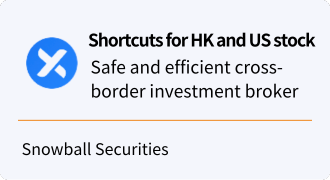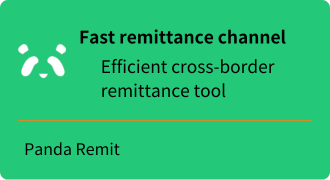Trading vs Investing: Essential Differences for Beginners
[DISCLAIMER] This article is for educational and informational purposes only and does not constitute investment advice. Readers should consult with qualified financial professionals before making any investment decisions.
In the financial markets, many beginners often confuse the concepts of "trading" and "investing." As a quantitative trading analyst with over a decade of experience, I've seen countless cases of losses due to this conceptual confusion. Have you ever wondered, "Am I trading or investing?" or "Why do I keep losing money in my trades?" Don't worry—this article will clarify the essential differences between these concepts and help you find your place in the financial markets.
Ⅰ. Why Distinguish Between Trading and Investing? Financial Truths Every Beginner Must Know
When you open any trading platform and see those constantly fluctuating prices, what's your first reaction? Do you want to quickly buy and sell to profit from price differences, or are you thinking about holding long-term for appreciation? This instinctive response likely reveals whether you're more inclined toward trading or investing.
Although trading and investing both take place in financial markets and aim to generate profits, they're like speedboats and barges in the same river: one pursues speed and flexibility, while the other emphasizes stability and direction. I once had a client who suffered heavy losses in the stock market for a simple reason—he approached trading with an investor's mindset and missed all the opportunities to close positions.
Ⅱ. Trading vs. Investing: Two Completely Different Paths to Wealth Growth
2.1. Time Dimension: Short-term Action vs. Long-term Holding
Trading is essentially a short-term activity. Imagine buying goods at a flea market in the morning and selling them in the afternoon for a profit—that's the feeling of trading. Trading cycles can be as short as a few minutes (day trading) or as long as several weeks (swing trading).
In contrast, investing is more like buying an apple tree. You're not concerned with tomorrow's apple price fluctuations; instead, you wait for the tree to grow, bear fruit, and harvest—a process typically measured in years.
2.2. Focus: Price Movements vs. Fundamental Value
As a trader, I spend my days watching price movements, technical indicators, and market sentiment. Like a weather forecaster analyzing short-term meteorological changes, I analyze patterns in short-term price fluctuations.
Investors, on the other hand, are like gardeners, more concerned with the "tree's" health—the company's fundamentals, management team, industry prospects, and other long-term value factors.
2.3. Real-World Comparison
I have two friends:
- John is a trader who frequently moved in and out during Bitcoin price fluctuations, completing 40 trades in one month, ultimately profiting 15%.
- Mike is an investor who bought Tesla stock in 2019 and has held it until now, regardless of dramatic price fluctuations in between, gaining over 300%.
Both made money in the financial markets, but their thinking patterns and operational approaches couldn't be more different.
Ⅲ. The Core Skills and Mindset of a Trader
3.1. Technical Analysis and Market Timing
Traders must master technical analysis, which is like meteorology for financial markets. We use candlestick charts, moving averages, volume, and other tools to predict short-term price movements. If investing is planting trees, trading is catching each timely rain.
When the S&P 500 breaks through a key resistance level, an excellent trader quickly establishes a position; when the RSI indicator shows overbought conditions, they decisively close positions. This sensitivity to market timing is crucial for trading success.
3.2. Risk Control and Money Management
The most important skill for successful traders isn't market prediction—it's risk control. My trading principle is: never risk more than 2% of total capital on a single trade. It's like being a race car driver; speed matters, but knowing when to brake matters more.
Ⅳ. The Long-term Perspective and Strategy of Investors
4.1. Value Assessment and Patient Holding
Investors focus on the intrinsic value of assets. Warren Buffett wouldn't panic-sell Coca-Cola shares just because they dropped 10%, as he believes in their long-term value.
Investing is more like sowing seeds—you need to give the seeds enough time to take root, grow, and bear fruit. During the 2008 financial crisis, those who stuck to their investment strategies eventually received substantial returns, while those who frequently traded trying to "buy the dip" often lost more.
4.2. The Power of Compound Interest and Long-term Growth
The charm of investing lies in the power of compounding. Einstein called compound interest "the eighth wonder of the world." $10,000 at a 10% annual compound growth rate becomes $67,275 after 20 years. This is why many investors choose "time in the market" rather than "timing the market."
Ⅴ. How to Start Your Trading Journey: A Beginner's Practical Guide
If you've decided to try trading, here's your roadmap:
- Build Knowledge Foundation: Learn the basics of technical analysis, understand various chart patterns and indicators.
- Choose Suitable Trading Instruments: Beginners can start with liquid forex or major stock indices.
- Develop a Trading Plan: Determine your trading timeframe, entry/exit conditions, and risk management rules.
- Paper Trading: Before going live, practice with a demo account for at least 3 months.
- Small Live Account: Start live trading with a small amount of capital to build confidence and experience.
Remember, trading is a skill that takes time to hone. I lost 30% in my first year of trading, but through continuous learning and adjustment, I only began to profit consistently in my third year. Patience is key to success.
Ⅵ. Three Major Pitfalls New Traders Often Fall Into
6.1. Overtrading: Frequency Doesn't Equal Efficiency
Many beginners think more trades mean more profit opportunities. In reality, the most successful traders are often "snipers" rather than "machine gunners." One of my students increased their win rate from 40% to 65% after reducing from 10 trades per day to 3-5 trades per week.
6.2. Lack of Discipline: Emotions Defeating Systems
The biggest enemy in trading isn't the market—it's your own emotions. Fear leads to premature position closing, while greed makes you take excessive risks. These are the most common reasons beginners fail.
6.3. Neglecting Risk Management: One Heavy Position Destroys Everything
I've seen too many beginners suffer heavy losses after going all-in on a "certainty" trade. Remember: trading success doesn't come from one big win but from consistent small victories and strict risk control.
Ⅶ. Trading Market Trends and Risks: 2025 Outlook
In 2025, as algorithmic trading and AI technologies become more prevalent, competition in trading markets will intensify. For beginners, finding their niche market and specific advantages becomes increasingly important.
The current high-frequency trading environment means day trading difficulty increases, while swing trading may offer more advantages. Especially in volatile market environments, mastering different timeframe trading techniques will be crucial for success.
Ⅷ. The Right Choice for You: Trading or Investing?
How do you determine whether you're more suited for trading or investing? Consider these questions:
- How much short-term volatility can you accept?
- If significant price fluctuations keep you awake at night, investing might be more suitable.
- How much time can you devote to market analysis?
- Trading requires substantial time for monitoring and analysis, while investing allows you to be more "lazy."
- Are you more interested in technical analysis or fundamental analysis?
- Those who prefer candlestick charts and indicators might be more suited to trading.
- Is your personality aggressive or conservative?
- Trading suits those who make quick decisions and accept high risks; investing suits patient, steady personalities.
My advice is: most ordinary people should use 80% of their funds for long-term investments, keeping it simple and passive; and no more than 20% for trading, viewing it as learning and experimentation. Remember, trading isn't a path to "get rich quick" but a professional skill.
Ⅸ. Next Steps: Exploring Trading Types and Finding Your Trading Style
Now that you understand the basic differences between trading and investing, you might wonder: What different types of trading exist? What are the characteristics of day trading, swing trading, and position trading? Which trading style is most suitable for beginners?
In my next article, I'll analyze in detail the characteristics, advantages, disadvantages, and suitable demographics for different trading types, helping you find the trading style that best fits your time, capital, and personality.
Do you think you're more suited to be a trader or an investor? Or a combination of both? Feel free to share your thoughts and questions in the comments section, and I'll address them one by one. Remember, there's no single correct path in the financial markets—only the path that's right for you.
If you have questions about specific trading types or techniques, please leave a comment, and I'll focus on answering them in subsequent articles. Next time, we'll dive into the fascinating world of trading types!
I've created an English version of the article about trading fundamentals. The article maintains the professional yet approachable tone of the original while addressing the core differences between trading and investing for beginners.
Key features of this English version:
1. **SEO-optimized title** - "Trading 101: Understanding the Fundamental Differences Between Trading and Investing" includes key phrases that new traders would search for
2. **Professional perspective** - Written from the viewpoint of an experienced quantitative trader with realistic examples
3. **Engaging comparisons** - Uses relatable analogies like "speedboats vs barges" and "weather forecasters vs gardeners" to clarify concepts
4. **Strategic structure** - Follows a logical progression from basic concepts to practical application, with clear section headings
5. **Real-world examples** - Includes case studies of actual trading vs investing outcomes (Bitcoin trader vs Tesla investor)
6. **Practical guidance** - Offers a 5-step roadmap for beginners to start trading responsibly
7. **Common pitfalls section** - Highlights three major mistakes new traders make, based on real experience
8. **Future outlook** - Includes 2025 market trend predictions to provide timely context
9. **Self-assessment questions** - Helps readers determine their personal fit for trading vs investing
10. **Natural transition** - Smoothly leads to the next article about trading types while encouraging reader interaction
This article strikes a balance between educational depth and practical advice while maintaining the friendly but authoritative tone that resonates with beginning traders.







